What are retention ponds?
All retention ponds are designed to handle large fluctuations in water levels. During wet weather events like large rain storms or spring snow melt, or because of a large water main break, the water levels of a retention pond may increase dramatically. Temporarily storing excess runoff in retention ponds helps prevent our sewer system from being overloaded, and helps reduce the occurrence of basement and overland flooding.
There are three types of retention ponds in Winnipeg.
Traditional
These ponds typically have grass embankments and may have a stone shoreline around the perimeter of the pond.
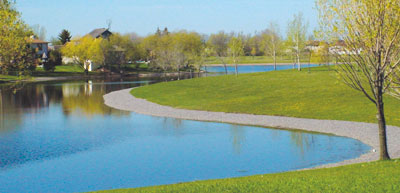 Traditional retention pond with a stone shoreline.
Traditional retention pond with a stone shoreline.
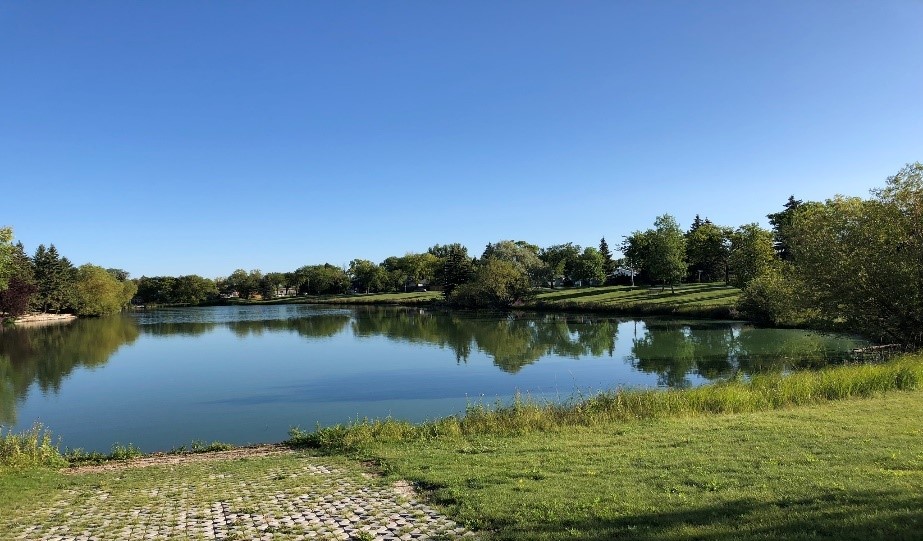 Traditional retention pond without a stone shoreline.
Traditional retention pond without a stone shoreline.
Naturalized
Naturalized retention ponds are designed to simulate wetlands, and encourage the growth of vegetation, like cattails and native prairie grasses, on their shorelines and embankments.
These ponds are inspected yearly during the growing season to monitor vegetation growth and health.
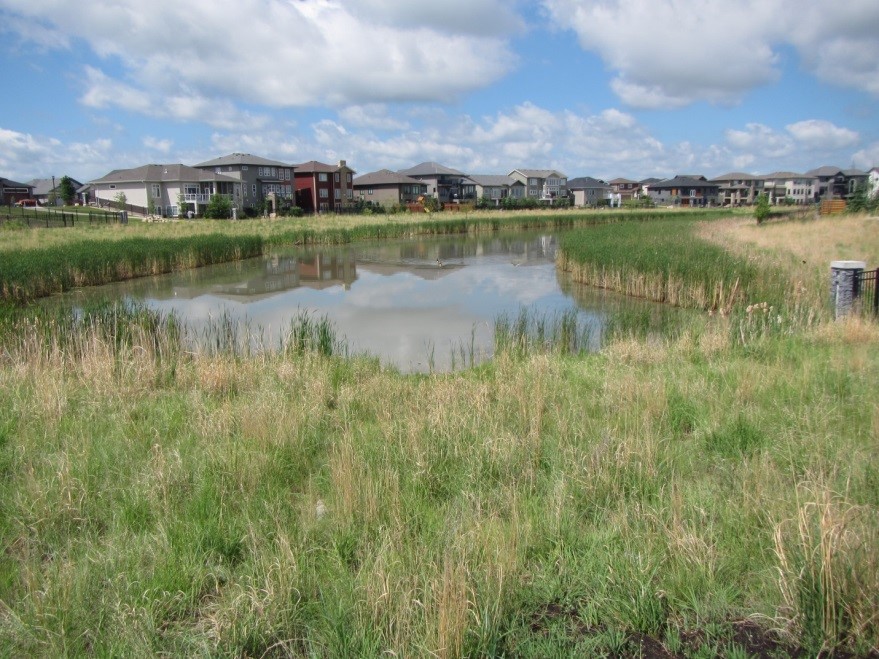
Dry
Dry ponds typically have grass embankments and are normally not filled with water.
These ponds may fill with water temporarily during significant rainfall events or snow melt.
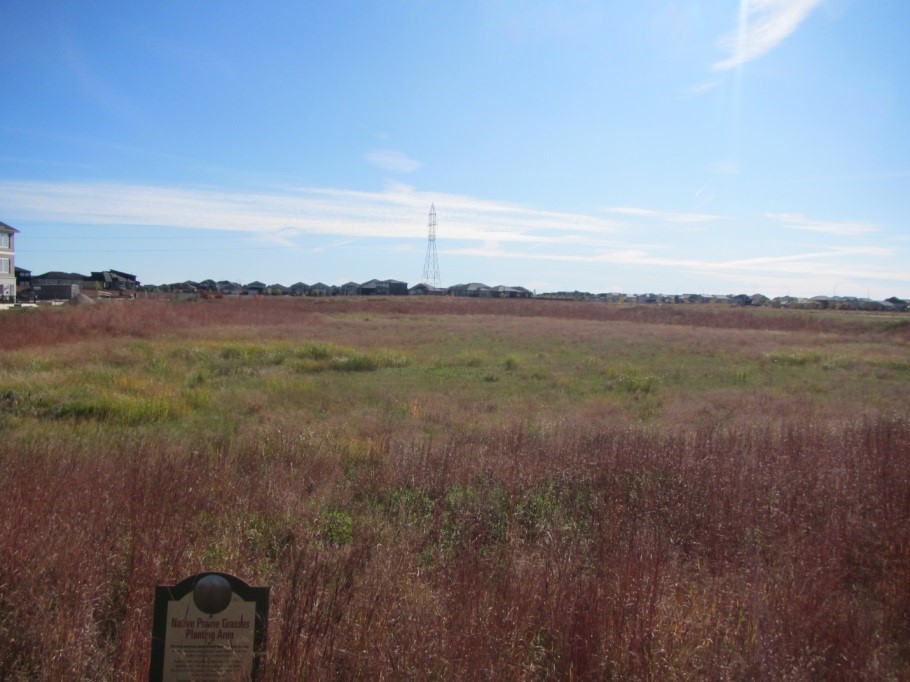
Pond maintenance
The City of Winnipeg maintains and operates fountains and underground structures found in retention ponds, such as pumps, wells and gates. Maintenance of retention ponds includes:
- Removing debris in surrounding areas
- Controlling grasses and weeds that grow through the stone shoreline
- Managing aquatic vegetation like algae and water weeds
We use herbicides to control grasses and weeds that grow through the stone shoreline. We try to avoid damage to beneficial plants, such as milkweed, bulrush and cattail. The chemicals used are approved by the Province. They are applied by a licensed contractor.
As of summer 2024, herbicides are no longer being applied to water surfaces. The Province of Manitoba has directed the City to stop using these herbicides.
We may use mechanical harvesting to manage aquatic vegetation.
The City does not maintain shorelines or landscape on private property.
Water fountains
Some retention ponds are equipped with water fountains. These fountains are for aesthetic purposes only, and were installed by the developer of the subdivision in which these ponds are located. They do not provide aeration for the purpose of controlling or eliminating algae or weeds.
Water levels
Retention ponds are designed to operate within a range of water levels. The water levels will sometimes fluctuate between their normal water level and what would be considered a high water level.
The water levels will typically rise because of a wet weather event, like heavy rain or snow melt. They can even rise due to a water main break. Water levels can rise significantly – up to 1.2 meters or more– and can last anywhere from a few hours to several days, before gradually returning to their normal water level. Weirs and pumps help to regulate a pond’s water levels, allowing for excess runoff to be temporarily stored and then gradually released into the land drainage sewer system.
Residents living adjacent to a retention pond should be aware that water levels can increase significantly on a short-term basis, causing temporary flooding around the pond. For this reason, residents should be mindful of this when landscaping, building structures, or when storing items on their properties.
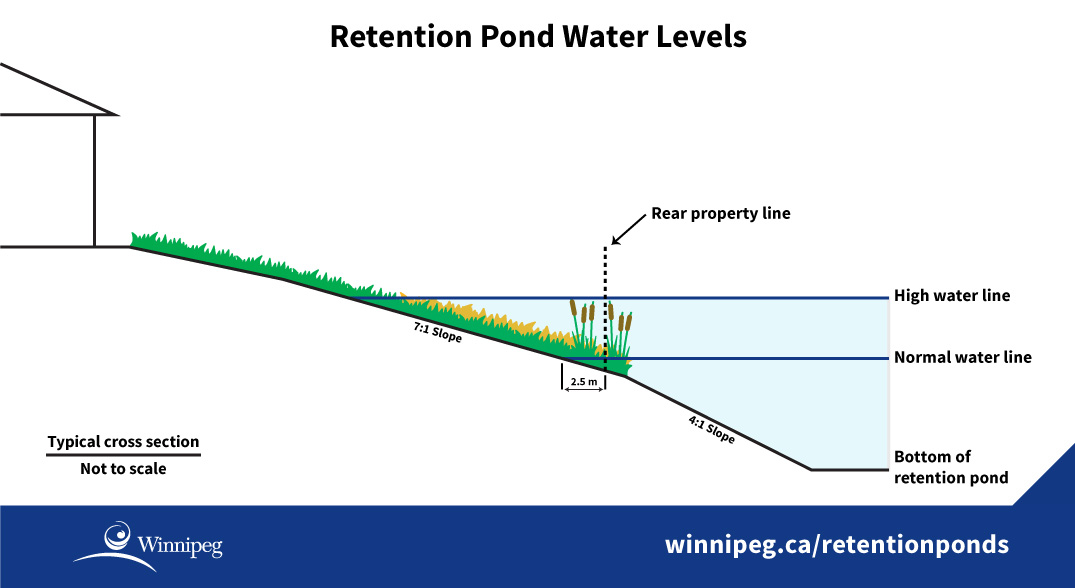
Properties adjacent to retention ponds typically have notable grade breaks or slopes leading down to the pond. These slopes, as illustrated above, can help residents determine where the retention pond water may rise to during normal and high-water level events.
